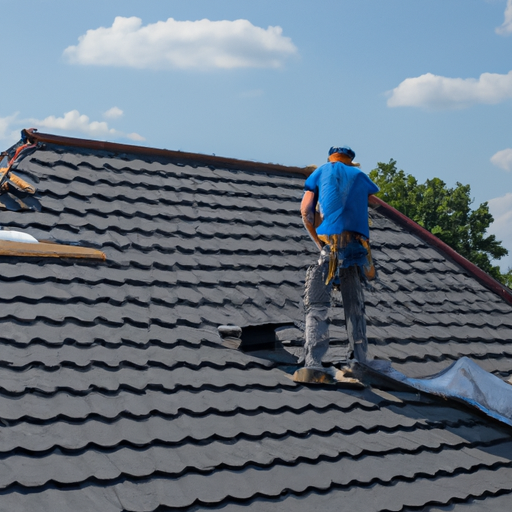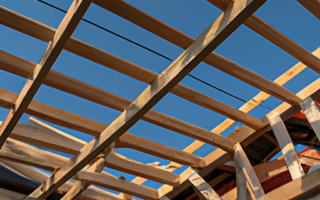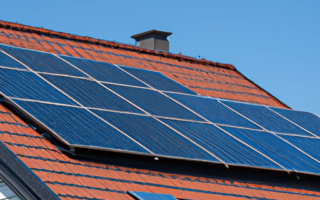Understanding the Basics: Roof Construction 101
Understanding the Basics: Roof Construction 101
When it comes to building or renovating a house, understanding the basics of roof construction is essential. The roof is not only a protective barrier against the elements but also plays a significant role in the overall aesthetic appeal of the structure. In this guide, we will provide you with a comprehensive overview of the key aspects of roof construction.
One of the first considerations in roof construction is the choice of materials. There are various options available, including asphalt shingles, metal roofing, clay tiles, and concrete tiles. Each material has its unique characteristics, such as durability, cost, and visual appeal. It is crucial to choose a material that aligns with your preferences, budget, and architectural style.
The next crucial aspect of roof construction is the roof’s shape, often referred to as the design or style. The most common roof styles include gable, hip, flat, and shed roofs. The roof’s shape not only affects the visual appeal but also impacts factors such as drainage, insulation, and attic space. It is essential to consider the climate and local building codes when selecting a roof style.
Roof trusses or rafters are essentially the framework supporting the roof. Trusses are pre-fabricated triangular structures made of wood or metal, while rafters are traditionally cut and assembled on-site. The choice between trusses and rafters depends on various factors, including cost, structural requirements, and ease of installation. Both options have their advantages and can be engineered to accommodate specific roof designs.
Another critical aspect of roof construction is the underlayment. The underlayment acts as a waterproofing layer, protecting the roof from leaks caused by rain or melting snow. Common types of underlayment include asphalt-saturated felt, synthetic materials, and rubberized asphalt. The underlayment is typically installed before the final roof covering to provide an additional layer of protection.
Ventilation is a crucial consideration in roof construction. Adequate ventilation helps to regulate temperature and moisture levels in the attic space, preventing condensation and reducing the risk of mold and rot. Ventilation systems can include ridge vents, soffit vents, gable vents, and powered exhaust fans. Proper ventilation is essential for the longevity of the roof and the overall comfort of the occupants.
Last but not least, proper installation and maintenance are vital for a durable and reliable roof. Hiring a professional roofing contractor with experience in roof construction is highly recommended. Regular inspections and maintenance, such as replacing damaged shingles or repairing leaks promptly, can extend the lifespan of your roof and prevent costly repairs down the line.
In conclusion, understanding the basics of roof construction is essential for anyone involved in building or renovating a house. From choosing the right materials and roof style to considering the framework and ventilation, every aspect plays a vital role in ensuring a functional, durable, and aesthetically pleasing roof. By following the guidelines and investing in professional installation and maintenance, you can enjoy a secure and beautiful roof for years to come.
Types of Roofing Materials: Pros and Cons
When it comes to roof construction, choosing the right roofing materials is crucial. The type of material you select will not only determine the aesthetic appeal of your roof, but also its durability, longevity, and resistance to weather elements. In this comprehensive guide to roof construction, we will explore the various types of roofing materials, along with their pros and cons.
Asphalt Shingles
Asphalt shingles are by far the most popular roofing material due to their affordability and versatility. They come in a wide range of colors and styles, making them a suitable choice for many architectural designs. Asphalt shingles are relatively easy to install and provide good fire resistance. However, they may not be as durable as some other roofing materials, and their lifespan can vary depending on the quality of the shingles.
Metal Roofing
Metal roofing has gained popularity in recent years due to its exceptional durability and energy efficiency. While metal roofs tend to be more expensive upfront, they can last up to 50 years or more, which makes them a cost-effective option in the long run. Additionally, metal roofs are highly resistant to fire, insects, and rot. On the downside, they can be noisy during heavy rainfall or hailstorms, and the installation process may be more complex compared to other materials.
Wood Shakes
Wood shakes offer a unique natural look and are often associated with traditional or rustic homes. They are typically made from cedar or other types of hardwood. Wood shakes provide good insulation and allow for better ventilation. However, they require regular maintenance to prevent moss, mold, or rot from developing. Additionally, wood shakes are more prone to fire, so it is important to treat them with fire retardants.
Slate Tiles
Slate tiles are known for their elegance and longevity. They are made from natural stone, which gives them a distinctive appearance. Slate roofs can last a century or more if properly maintained. They are highly resistant to fire, mold, and insects. However, the installation process for slate tiles can be challenging, and the weight of the tiles may require additional structural support. Slate tiles are also one of the most expensive roofing options available.
Clay or Concrete Tiles
Clay or concrete tiles are a popular roofing material in Mediterranean or Spanish-style architecture. They are aesthetically pleasing and can provide excellent insulation. Clay tiles are durable and resistant to fire and insects. However, they may be prone to cracking due to thermal expansion or impact. The weight of clay or concrete tiles can also be a concern, requiring sturdy roof structures to support them.
Conclusion
Choosing the right roofing material is a significant decision that can impact the overall performance and appearance of your roof. Consider factors such as durability, cost, maintenance, and architectural style when making your selection. Consult with a professional roofer to assess your specific needs and determine the best roofing material for your home.
Step-by-Step Guide to Building a Roof: From Planning to Completion
Building a roof is an essential part of constructing a house or any other structure. It provides protection against the elements and plays a crucial role in maintaining the overall structural integrity of the building. In this step-by-step guide, we will walk you through the process of building a roof, from planning to completion.
1. Planning: Before starting the construction of a roof, careful planning is required. This involves determining the type of roof you want, considering factors such as the climate, building codes, and architectural style. You will also need to calculate the pitch or slope of the roof, which affects the material choices and construction method.
2. Obtaining Permits: Depending on the location, you might need to obtain permits from the local government or building department before commencing the roof construction. Make sure to research and understand the specific requirements and regulations in your area.
3. Material Selection: Once you have a plan in place, it’s time to choose the materials for your roof. Popular options include asphalt shingles, metal roofing, tile, and wood. Consider factors such as durability, cost, and aesthetics when making your selection.
4. Preparing the Roof Deck: The roof deck is the foundation of the roof structure. It should be clean, level, and free from any debris. Repair or replace any damaged sheathing or decking before proceeding.
5. Installing the Underlayment and Flashing: The underlayment provides an additional layer of protection against water infiltration. It is typically made of asphalt-saturated felt or synthetic materials. Flashing is installed around roof penetrations, such as chimneys and vents, to prevent water from entering.
6. Setting Up Roofing Materials: This step involves installing the primary roofing materials, such as shingles or metal panels, according to the manufacturer’s instructions. Take care to ensure proper overlapping and alignment of the materials to create a watertight barrier.
7. Adding Ventilation: Proper ventilation is crucial for maintaining a healthy roof and preventing moisture build-up. Install roof vents and soffit vents to promote air circulation and reduce the risk of mold or rot.
8. Finalizing the Edges and Ridge: To give your roof a finished look and provide added protection, install edge trims and ridge caps. These components help seal off the edges and ridges, preventing water from entering.
9. Inspection and Maintenance: Once the roof is complete, it’s essential to conduct a thorough inspection to ensure everything is in order. Regular maintenance, such as cleaning gutters and checking for any damage or leaks, will help extend the lifespan of your roof.
Building a roof requires careful planning, precise execution, and attention to detail. By following this step-by-step guide, you will be well-equipped to construct a roof that is sturdy, durable, and capable of withstanding the elements for years to come.
Ensuring the Longevity of Your Roof: Maintenance and Repair Tips
Ensuring the longevity of your roof is crucial for the overall health and safety of your home. Regular maintenance and prompt repairs are essential to prevent any potential damage and prolong the lifespan of your roof. In this section, we will provide you with some valuable tips to help you maintain and repair your roof effectively.
One of the most important maintenance tasks is to regularly inspect your roof for any signs of damage. This includes checking for loose or missing shingles, cracked tiles, or any other visible wear and tear. It’s advisable to conduct these inspections at least twice a year, preferably in the spring and fall, to identify and address any issues early on.
Another important aspect of roof maintenance is keeping your gutters clean and free from debris. Clogged gutters can lead to water pooling on your roof, causing damage to the structure and increasing the risk of leaks. Regularly remove leaves, branches, and other debris from your gutters to ensure proper water drainage.
Trimming overhanging tree branches is also crucial in maintaining the longevity of your roof. Not only can falling branches damage your roof directly, but the constant rubbing of branches against the roof surface can wear down the protective layers and lead to leaks. Make sure to keep trees around your house well-maintained and trimmed to avoid any potential risks.
When it comes to repairs, addressing issues promptly is crucial to prevent further damage. Minor issues, such as loose or missing shingles, can be fixed relatively easily with some basic DIY skills. However, for more complex issues or major damage, it’s best to hire a professional roofing contractor to ensure the repairs are done correctly.
Regularly check your attic for any signs of roof leaks or water damage. Look for discoloration on the ceiling, peeling paint, or mold growth as these are indications of potential leaks. If you notice any of these signs, it’s crucial to address the issue immediately to prevent further damage to your roof and home.
Lastly, consider applying a protective coating on your roof to enhance its longevity. Roof coatings can provide an additional layer of protection against UV rays, extreme weather conditions, and prevent leaks. Consult with a professional roofing contractor to determine the best coating option for your specific roof type.
In conclusion, regular maintenance and timely repairs are essential for ensuring the longevity of your roof. By following these tips and conducting routine inspections, you can identify and address any issues early on, preventing costly damage and prolonging the lifespan of your roof.



